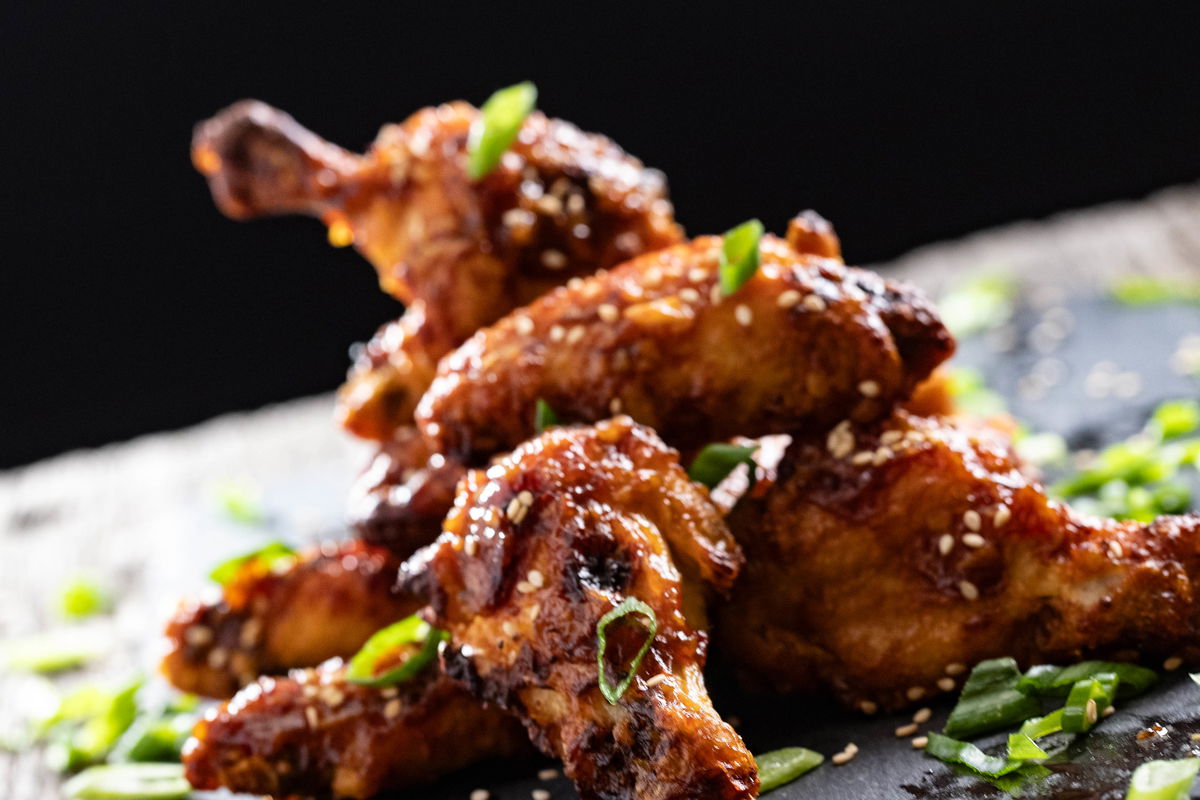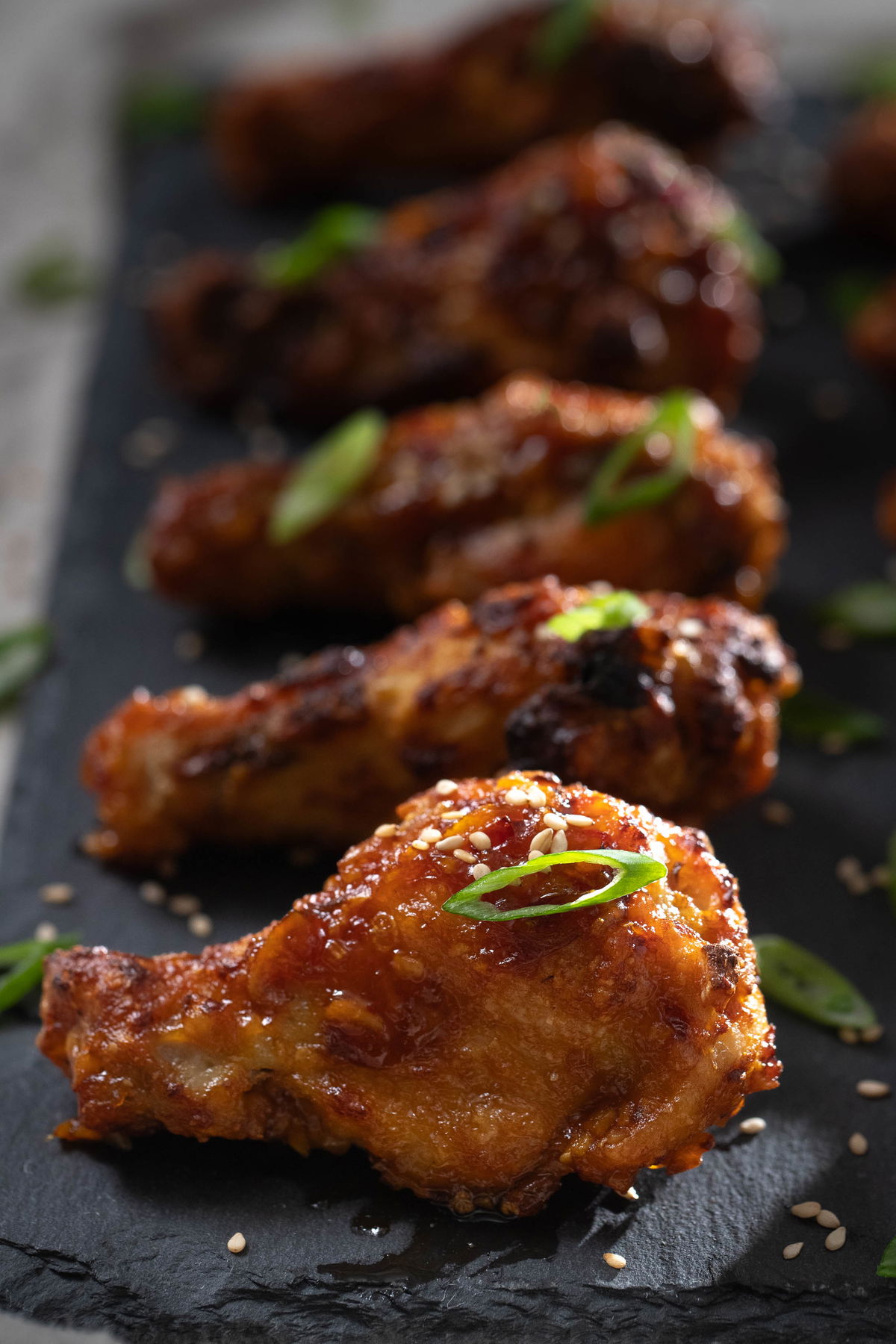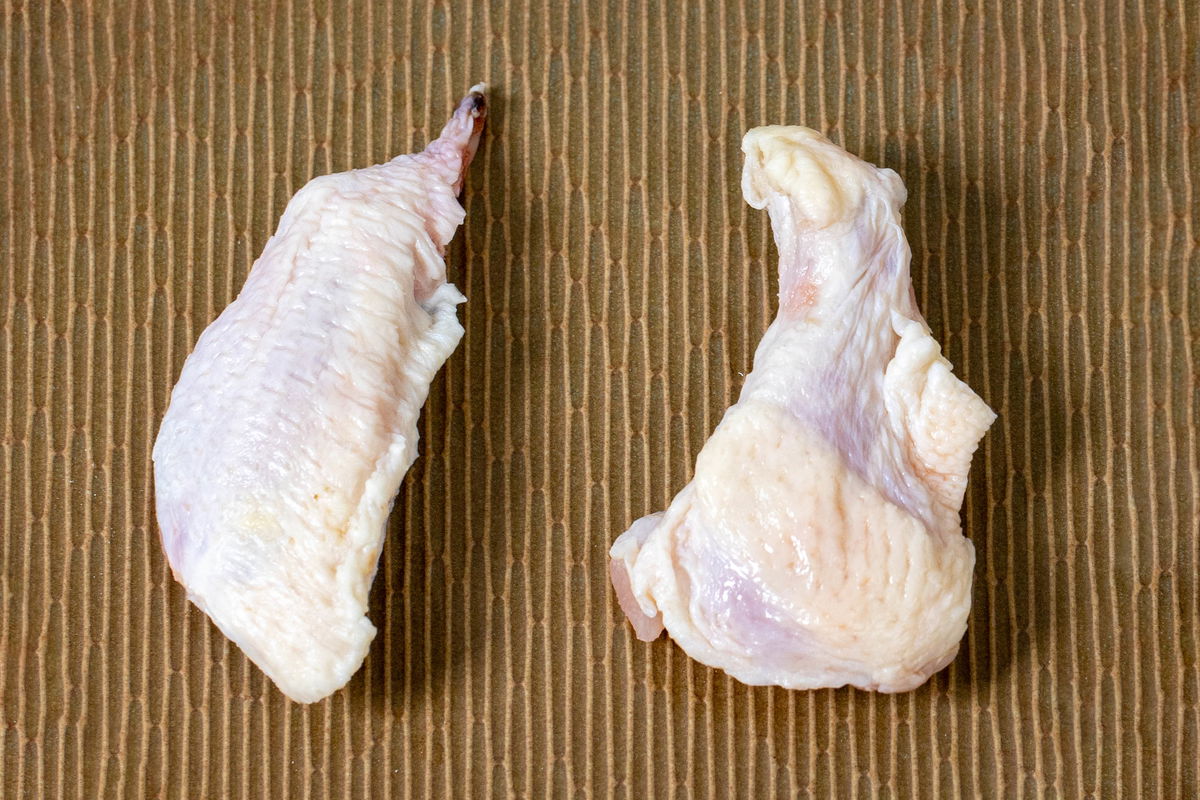Chicken wings are an American classic and a staple appetizer on sports bar menus across the country But what truly makes a chicken wing great? There are several factors that separate the good from the great when it comes to these tasty game day snacks In this comprehensive guide, we’ll break down the key components of a phenomenal chicken wing.
Choosing the Right Cut
The foundation of a stellar chicken wing is starting with the right cut of meat. The two options are drumettes (the meatier upper section) or flats (the smaller lower sections). Drumettes tend to have more tender meat while flats have crispier skin. It’s largely a matter of personal preference. The most important factors are ensuring the wings are high quality, fresh and evenly sized for even cooking.
The Flavorful Marinade
A flavor-packed marinade can make or break a chicken wing. An ideal marinade contains an acidic element like vinegar or citrus to help break down proteins for tenderness. It also infuses bold, mouthwatering flavors into the meat. Classic buffalo wing marinades have cayenne pepper and hot sauce. Barbecue wings may use a sweet and smoky dry rub. The possibilities are endless, so get creative with flavors!
Achieving the Ideal Crispiness
Crispy skin with a tender, juicy interior is what chicken wing dreams are made of. Frying yields the crispiest wings, but baking, broiling, and grilling are healthier options. No matter the cooking method, it’s vital to thoroughly dry the wings and cook at a high temp. For fried wings, the oil should reach 375°F. Bake at 450°F or grill over direct high heat. Check for doneness and avoid overcooking.
Perfecting the Sauce-to-Meat Ratio
The sauce completes a chicken wing, but too much can ruin it. Use a ratio that provides plenty of flavor without sogginess. As a general rule, toss wings with just enough sauce to lightly coat each one. For extra sauce control, serve additional sauce on the side for dipping. Find the ideal balance to let the delicious flavors shine through.
Elevating with Unexpected Ingredients
Unique ingredients can take chicken wings from basic to extraordinary. Instead of typical Buffalo, try harissa, jerk seasoning, or gochujang. Swap blue cheese dressing for avocado ranch or chimichurri sauce. Top with unexpected garnishes like sesame seeds, microgreens, or crispy fried shallots. Innovation and global flavors are surefire ways to impress wing lovers.
Pairing with Perfect Sides
Complement your wings with crave-worthy sides like crunchy coleslaw, creamy mac and cheese, crisp onion rings or fries, and tangy pickled veggies. Don’t be afraid to think outside the box either. Try lighter sides like a fresh green salad, roasted veggies, or fruit like watermelon. The options are endless for crafting a complete and satisfying chicken wing experience.
Mastering the Cook
Achieving chicken wing greatness requires perfecting the cook. Frying demands close monitoring to avoid burning. Baking needs rotating for even crisping. Grilling requires managing direct vs indirect heat. Invest in a good meat thermometer and kitchen timer. Allow wings to rest before tossing in sauce. Serving wings immediately after cooking maintains that ideal texture. Patience and practice lead to chicken wing mastery.
The Takeaway
At the end of the day, a phenomenal chicken wing checks all the boxes: juicy, tender meat encased in an ultra-crisp, seasoned shell, perfectly sauced, and thoughtfully paired with sides. It’s a delicate balance of technique, high quality ingredients, and artistry. But the payoff of chicken wing perfection is truly mouthwatering. So gather your supplies, crank up the heat, and get ready to become your family’s newest chicken wing icon.

How many Chicken Wings should you serve?
How many wings to serve your guests depends on how hungry you expect them to be, how long you expect them to eat, and whether you are serving them many other foods alongside the wings.

If I were serving someone a plate of wings, call it a meal and be done with them afterword, I would suggest about a pound of chicken wings per person. That is typically 8 to 12 pieces. Keep in mind, much of the weight of 1 pound of chicken wings is bone. If this person were sticking around to watch a 3-hour football game, they might start to get their appetite back as the second-hour approaches, so I would suggest 1 1/2 to 2 pounds per person.
However, if you offer a large food spread, 1/2 pound per person should suffice.

What are Chicken Wings?
I don’t doubt you have seen these little chicken pieces before and probably eaten them many times. But these “wings” are much smaller than a chicken’s wing. And you may have noticed they come in two distinct shapes. One resembles a miniature drumstick, and the other has two bones running parallel and attached at either end.
These “party wings” are, in fact, chicken wings. But they are chicken wings that have been split into two bite-sized pieces called “drummettes” and “flats,” or “wingettes.”

Gordon Ramsay’s Hot Ones Inspired Wings
FAQ
What is the key to a truly great chicken wing?
What makes a great chicken wing? In my opinion, a great chicken wing has to be crispy on the outside and tender inside. It is best when the wings are tossed in a sauce that nicely balances sweet and spicy.
What makes chicken wings good?
Air-drying the wings overnight helps them crisp up faster when you bake them, which corresponds to juicier meat in the end. Baking powder adds surface area to the chicken wings, intensifying their crunch.
What is the secret to perfect wings?
For the best Buffalo wings, dry brine them first (this both seasons the meat and helps to dry out the skin), then toss in a mixture of cornstarch and flour before baking the wings until golden brown and crispy and tossing with Buffalo sauce.
What are the criteria for judging chicken wings?
Guide begins with a brief history of WINGS and covers 5 categories: Visual Appeal, Taste, Crispiness, Tenderness, and Sauce.
